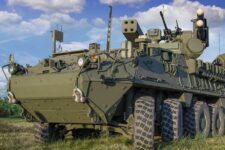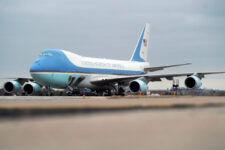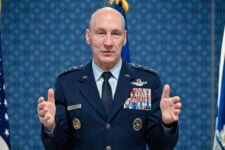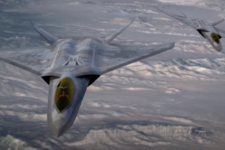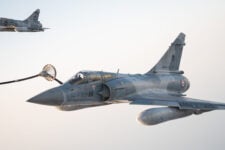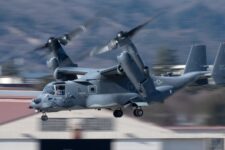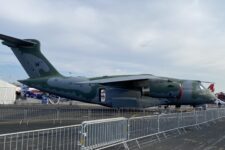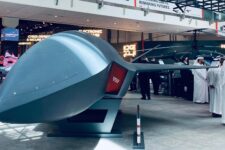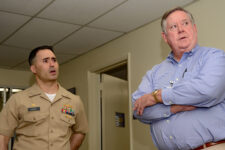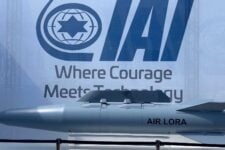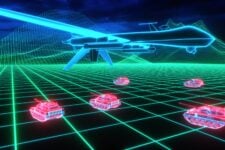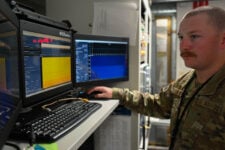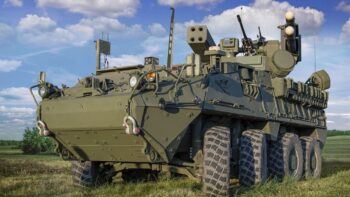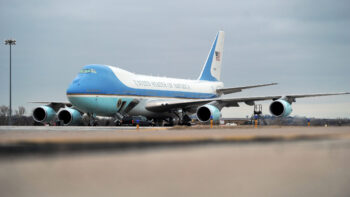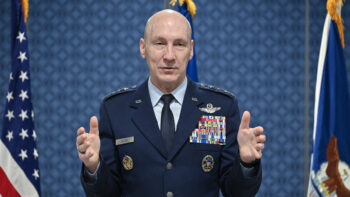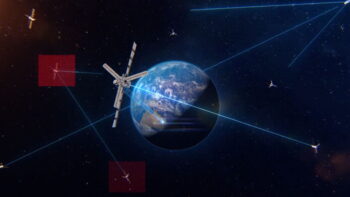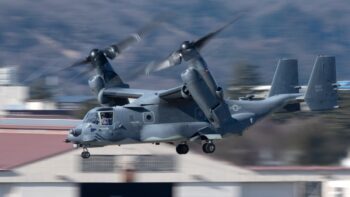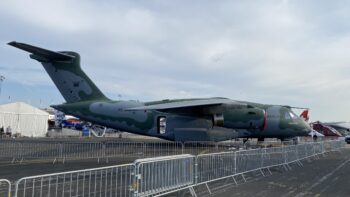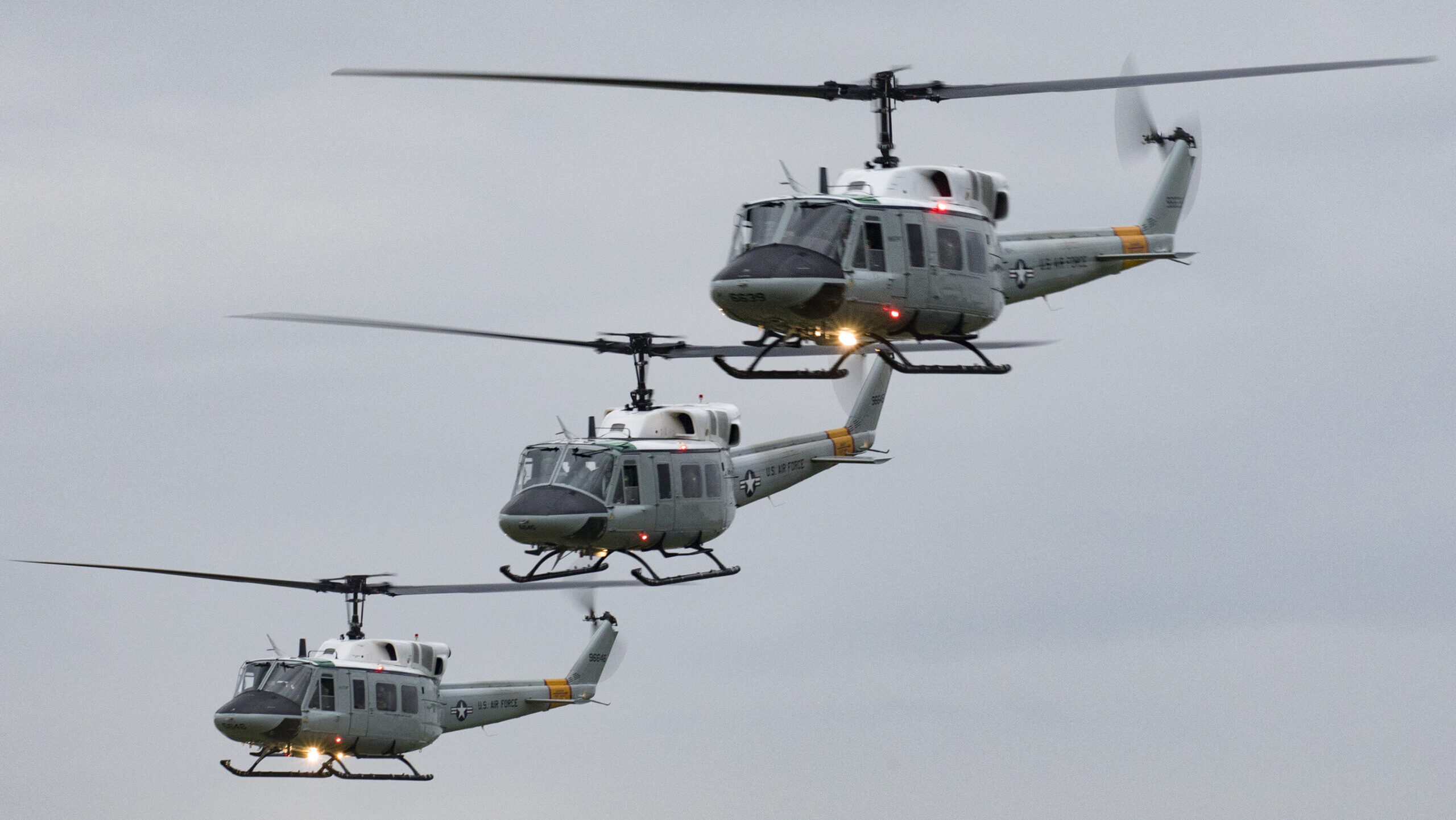
Three UH-1N Iroquois helicopters assigned to the 459th Airlift Squadron fly in formation during a training mission over Yokota Air Base, Japan, Oct. 2, 2017. (U.S. Air Force photo by Yasuo Osakabe)
YOKOTA AIR BASE, Japan — The lone UH-1N Huey helicopter squadron in the Indo-Pacific is facing an unknown future after the US Air Force halved its planned acquisition of the MH-139A Grey Wolf helicopters in fiscal 2025.
The 459th Airlift Squadron located at Yokota Air Base plays an unglamourous but important role in the Asia-Pacific, using the Vietnam-era Huey helicopter as well as white-tailed C-12 cargo planes to transport VIPs across Japan and to shuttle patients to US-owned military hospitals.
But after the Air Force reduced its planned MH-139A program of record from 80 to 42 helicopters, the squadron is left without an eventual replacement for the UH-1N and current plans only fund the 459th’s Hueys through fiscal 2026, said Lt. Col. Samuel Shamburg, the squadron’s commander.
That could be a loss for injured or sick US servicemembers, Defense Department civilians and family members, as Japanese hospitals can deny treatment, even during an emergency — leaving US military hospitals as the only guaranteed way of getting immediate access to medical care.
“While we’re not the exquisite capability, there’s so many small niche things that this unit in particular fills,” Shamburg said during a visit to Yokota on May 20. “It’s one of those things that you won’t know what you’re missing until it’s gone. But at a high-end fight, you need that added flexibility, especially to work closely with one of your greatest allies.”
Yokota’s Huey squadron is watching closely as Congress deliberates the FY25 budget, and it isn’t the only one staring down an uncertain path. The other Huey units that do not conduct missions in support of securing the nation’s intercontinental ballistic missile facilities — which include the 1st Helicopter Squadron at Fairchild Air Force base, 36th Rescue Squadron at Andrews Air Force Base, 512th Rescue Squadron of Kirtland Air Force Base, and 40th Flight Test Squadron at Duke Field — are in the same predicament.
The Air Force did not respond to questions by press time about what options the service is considering for Huey squadrons that will not be able to field the Boeing-built MH-139.
The Air Force announced its decision to cut its MH-139 buy as part of the FY25 budget request, with acquisition executive Andrew Hunter telling reporters in March that, “It’s just about the overall budget of the Air Force and what we’re able to afford and what we’re not able to afford.”
The decision to slash procurement quantities caused MH-139 per-unit prices to skyrocket, as development costs are spread between fewer helicopters, resulting in a $1.2 billion cut to planned procurement costs. That triggered a critical Nunn McCurdy breech in April, which forces the Defense Department to conduct a review of the program but is unlikely to result in a cancelation.
Despite the Huey’s advanced age, the 459th Airlift Squadron’s four UH-1Ns and three C-12s boast high mission capability rates, hovering around 90 percent, Shamburg said, speaking in a hangar on base. The Hueys predominantly serve operations in the Kanto plain, flying government officials from Yokota — located on the outskirts of Tokyo — into the center of the sprawling metropolis, and ferrying sick patients to US Naval Hospital Yokosuka, normally a two-hour trip by car. The C-12s have longer legs, allowing crews to reach Okinawa.
“If you think of that [C-130] as like a semi, we’re just a four-by-eight U Haul trailer, but we are super cheap and we’re able to do it more cost effectively than anything really in the air,” he said, speaking from a hangar. He added that the squadron really needs more than the five Huey crews to be able to comfortably maintain a 24/7 alert status for medical emergencies, but the squadron “makes it work.”
As affordability is a key concern for the Air Force, there’s no easy solution for replacing the Hueys. Both a UH-60 Black Hawk or MH-139 would provide a capability boost with slightly faster top speeds and the ability to cover longer ranges, but at a higher cost per flying hour, Shamburg said. Another option is for the Air Force to contract with a hired medical evacuation company, but those services can also be expensive.
The service will need to decide soon about whether it will replace the Huey in some fashion, or abandon the missions currently performed by the helicopter altogether.
“At some point, we need to either turn the manning pipeline back on, because I have people who’ve been here a while that need to get out, and I think there’s a need to bring new people in,” he said. “And so that’ll all come clear once we know what Congress and Air Force is going to do in the next budget, I hope.”
